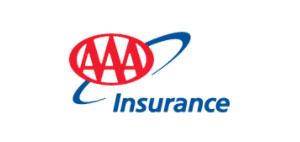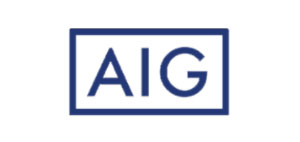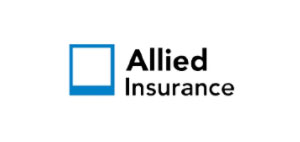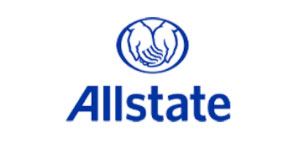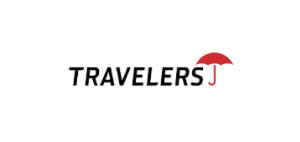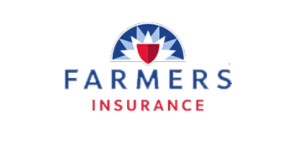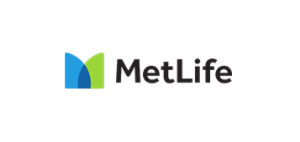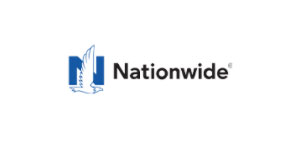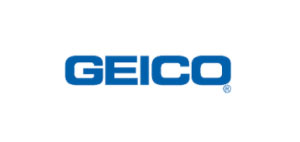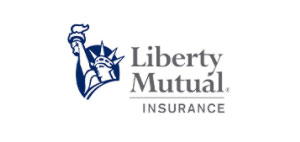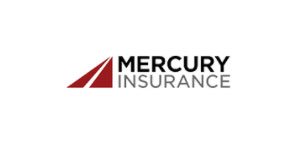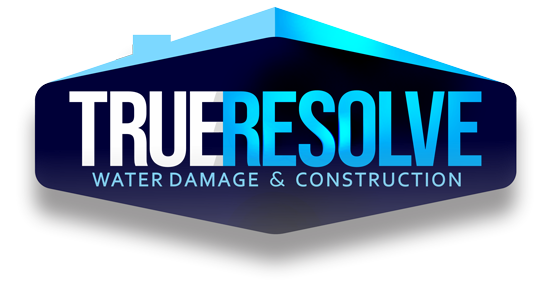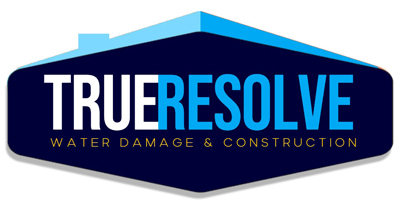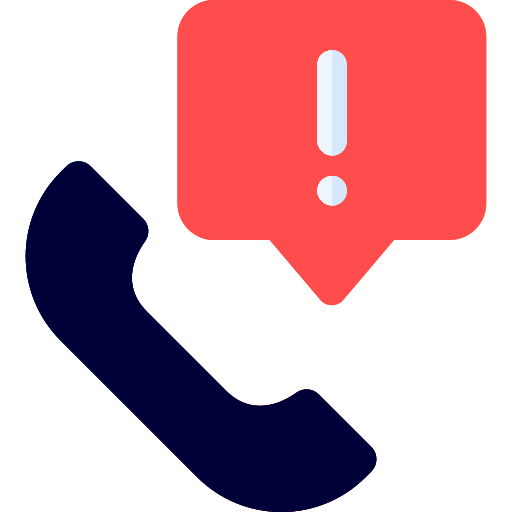Mold Remediation
- MOLD REMOVAL SERVICES
MOLD REMOVAL SERVICES
WATER | MOLD | CONSTUCTION | 24HRS
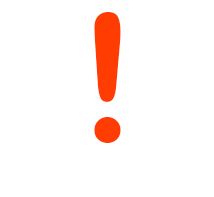
- WATER TURNS INTO MOLD IN LESS THAN 48 HOURS
- MOLD CAN LEAD TO SEVERE HEALTH AFFECTS
- YOUR INSURANCE COMPANY CAN DENY YOUR CLAIM FOR NEGLIGENCE IF YOU ALLOW YOUR PROPERTY TO FALL INTO FURTHER DISREPAIR FROM MOLD

Tackling mold involves mold remediation and mold removal for thorough treatment. Mold remediation starts with a detailed evaluation, identifying specific spore types and contamination scope. Technicians use HEPA filtration systems to capture 99.97% of airborne spores, guaranteeing air quality meets safety standards. Mold removal focuses on surface cleaning and replacing porous materials. Combining containment strategies and moisture control prevents mold regrowth. Post-remediation testing confirms spore counts are at safe levels. Understanding these techniques’ scientific rigor ensures an effective, long-term solution. Investigate these methods to guarantee complete eradication and prevent future mold issues.
Mold Remediation Process
You’ll begin the mold remediation process with a thorough evaluation, identifying the contamination’s scope and the specific spore types present. Utilizing HEPA filtration systems, technicians will then remove airborne spores to guarantee air quality meets safety standards. These steps are essential for effective remediation and preventing future mold growth.
Initial Evaluation Steps
A thorough initial evaluation in the mold remediation process involves detailed inspection and assessment to determine the extent of contamination and identify mold species present. Utilizing advanced evaluation techniques guarantees that you get a complete understanding of the issue at hand. To start, you’ll need to take air and surface samples to measure the spore count, providing data on indoor air quality and indicating the severity of contamination.
Next, you should identify the specific mold life cycles and species present, which is essential for choosing effective remediation methods. Detailed mapping of the affected areas helps in formulating containment strategies to prevent the spread of mold spores during the remediation process.
- Evaluation techniques: Use state-of-the-art tools like moisture meters and thermal imaging to detect hidden mold and water sources.
- Containment strategies: Establish physical barriers and negative air pressure systems to confine mold spores to the affected area.
- Spore count and indoor air: Conduct air sampling before and after remediation to ensure indoor air quality meets safety standards.
Air Filtration Techniques
Effective air filtration techniques are critical in the mold remediation process to capture airborne spores and prevent their spread to unaffected areas. By utilizing HEPA filtration systems, you can guarantee that mold spores and other airborne contaminants are effectively captured, enhancing the overall air quality during the removal process. HEPA filters are designed to trap particles as small as 0.3 microns with 99.97% efficiency, making them indispensable in mold remediation.
You need to implement containment strategies to maintain effective filtration and prevent cross-contamination. This involves setting up negative air machines equipped with HEPA filters to create pressure differentials, ensuring that contaminated air does not escape the sealed-off area.
Emotional Response | Action |
Concern for safety | Implement HEPA filtration |
Sense of urgency | Initiate containment |
Reassurance | Trust air purification |
Relief | Ensure air quality |
Confidence | Follow expert techniques |
Effective filtration techniques are not just about equipment; they are about safeguarding the safety and health of everyone involved. By focusing on air purification and containment strategies, you can confidently tackle mold remediation, knowing that you are providing a safer and healthier environment for your clients.
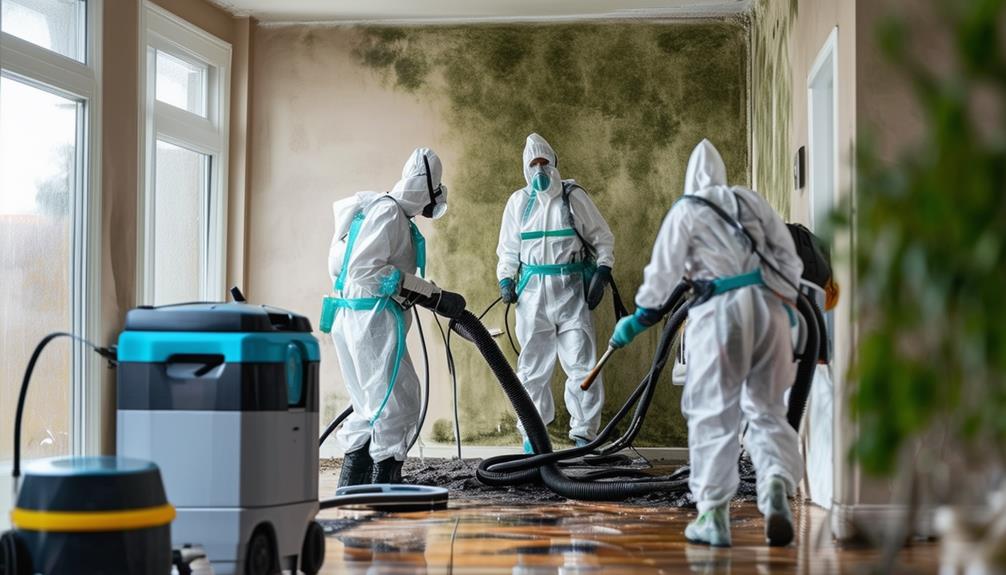
Importance of Mold Evaluation
Accurate mold evaluation is essential to determine the scope of contamination and identify specific mold sources. By pinpointing the types of spores and their concentration levels, you can develop targeted remediation strategies. This scientific assessment guarantees that both immediate mold removal and long-term prevention measures are effectively implemented.
Scope of Contamination
Evaluating the extent of mold contamination is crucial to develop a focused remediation plan that guarantees thorough eradication and prevents future growth. To begin, identifying contaminated areas allows you to prioritize your efforts and allocate resources effectively. Conducting a detailed spore evaluation provides critical data on mold species and concentrations, which informs targeted solutions for each specific scenario.
Consider the following reasons why a thorough evaluation is important:
- Precision: Identifying all contaminated areas ensures no hidden mold colonies are overlooked.
- Safety: A thorough spore evaluation helps evaluate potential health risks, guiding protective measures for occupants.
- Effectiveness: Post-testing validation confirms that remediation efforts have successfully eliminated mold and prevented reoccurrence.
Identifying Mold Sources
Understanding the origin of mold contamination is crucial in devising a tailored remediation strategy that targets root causes and prevents future outbreaks. Accurate mold detection and identification of mold sources are pivotal steps in this process. You need to conduct a thorough evaluation of your property to pinpoint areas with excessive moisture, as these are prime breeding grounds for mold. Implementing moisture control measures, such as fixing leaks and improving ventilation, is vital for effective mold prevention.
Indoor air quality assessments are invaluable for detecting mold spores that aren’t visible to the naked eye. Utilizing advanced tools like hygrometers and infrared cameras can help you identify hidden moisture and potential mold sources behind walls or under flooring. Data-driven approaches ensure you tackle the root of the problem rather than just addressing surface manifestations.
Mold prevention isn’t a one-time task but a continuous effort. Regular inspections and monitoring can help you maintain a mold-free environment. By understanding and controlling moisture levels and maintaining good indoor air quality, you can significantly reduce the risk of mold growth and safeguard the health and well-being of those you serve.
Identifying Mold Sources
When identifying mold sources, you should focus on common growth areas such as crawl spaces, basements, and attics, which are prone to high humidity. Moisture is the primary driver of mold proliferation, often stemming from leaks, condensation, or inadequate ventilation. Using hygrometers and moisture meters can provide precise data on humidity levels and help pinpoint the exact sources of mold.
Common Mold Growth Areas
Common mold growth areas, often overlooked, include crawl spaces, basements, and attics due to their high humidity and poor ventilation. These areas are prime targets for mold proliferation, often resulting in hidden growth that can go unnoticed for extended periods. To effectively address mold issues, it’s important to recognize common signs like musty odors, discoloration, and moisture accumulation.
Implementing prevention strategies is essential. Regular inspections and maintaining low humidity levels can avert mold-related problems. Yet, when mold is already detected, DIY removal might seem appealing but often falls short in addressing the root cause. Professional intervention ensures long-term solutions by eliminating mold and preventing recurrence.
Key considerations include:
- Ventilation: Maintain adequate airflow in crawl spaces, basements, and attics to reduce humidity.
- Moisture Control: Use dehumidifiers and fix leaks promptly to prevent mold-friendly environments.
- Regular Inspections: Routine checks help detect early signs of mold, mitigating extensive damage.
Moisture and Mold Sources
Identifying moisture and mold sources is important for successful mold remediation, as these factors directly contribute to mold growth and recurrence. Effective moisture prevention requires pinpointing areas where water intrusion occurs, such as leaky roofs, plumbing issues, and poor ventilation. By addressing these mold sources, you can greatly reduce the likelihood of mold growth.
To achieve mold prevention, focus on moisture control strategies. Utilize dehumidifiers, make sure proper drainage systems are in place, and repair any leaks promptly. Data shows that maintaining indoor humidity below 60% is crucial for preventing mold proliferation. Regular inspections of high-risk areas like basements, crawl spaces, and attics can help you identify potential mold sources early.
Scientific studies reveal that mold thrives in environments with persistent moisture. Therefore, thorough moisture prevention measures are important. Implementing moisture control techniques, such as improving ventilation and using moisture barriers, can effectively reduce the risk of mold growth. For instance, applying products like X-70 Plus creates a durable barrier against moisture and mold.
Post-Remediation Testing
After mold remediation, it’s vital to conduct post-remediation testing to verify the effectiveness of the treatment. You’ll need to confirm that mold spore counts have returned to normal levels, validating a safe environment for occupants. Independent environmental experts can provide precise data through air sampling and surface testing, ensuring thorough validation of the remediation process.
Ensuring Remediation Effectiveness
To guarantee the remediation process’s effectiveness, post-remediation testing rigorously verifies that mold spore counts are within acceptable levels, providing a safe and habitable environment. This step is essential to confirm remediation success and involves several scientific methods to validate the thoroughness of the contaminant removal process.
Using specialized equipment, you’ll collect air and surface samples to measure spore count verification. Independent environmental experts will assess these samples to confirm that the levels align with healthy indoor air quality standards. This testing effectiveness ensures that the environment is free from harmful mold and that remediation validation is accomplished.
Key considerations for post-remediation testing include:
- Comprehensive Air Sampling: Collecting air samples from different areas of the remediated space to detect any lingering spores.
- Surface Sampling Techniques: Swabbing surfaces that were treated to ensure no mold remnants remain.
- Data Analysis and Reporting: Using lab results to create a detailed report confirming the success of the remediation efforts.
Confirming Safe Environment
Confirming a safe environment after mold remediation hinges on rigorous post-remediation testing, guaranteeing that mold spore counts meet stringent indoor air quality standards. You’ll need to engage independent environmental experts to conduct thorough mold testing. This involves collecting air and surface samples to determine if mold spore levels are within acceptable limits, addressing any health concerns associated with lingering mold.
Indoor air quality is paramount in achieving environmental safety. Technicians will utilize advanced tools such as HEPA filters and air scrubbers to make sure the air is clean. They may also administer Anabec Anasphere and X-70 Plus treatments, which provide a durable barrier against moisture and mold regrowth, essential to mold prevention.
Post-remediation testing doesn’t just confirm the absence of mold; it verifies that your space is safe to inhabit. Data-driven approaches will help you understand the effectiveness of the remediation process, ensuring no residual mold threatens occupants’ health. By adhering to these meticulous protocols, you can confidently affirm that your environment has met the highest standards of cleanliness and safety, providing peace of mind and safeguarding well-being.
Mold Removal Techniques
To effectively tackle mold contamination, you’ll need to employ both surface mold cleaning and airborne spore control techniques. Surface mold cleaning involves the use of biocides and fungicides to eliminate visible mold on affected materials, while HEPA filtration systems are crucial for capturing airborne spores and preventing their spread. By combining these methods, you guarantee a thorough approach to mold removal, reducing health risks and preventing recurrence.
Surface Mold Cleaning
Surface mold cleaning requires scientifically proven techniques to effectively remove mold spores and prevent recurrence. Implementing mold prevention strategies is essential in guaranteeing long-term success. Start with DIY cleaning methods for non-porous surfaces like tiles and glass using a mixture of water and vinegar, an eco-friendly solution that’s both effective and safe. Yet, for porous materials, replace them with mold resistant materials to mitigate future mold growth.
Key steps to keep in mind:
- Vital Ventilation: Ensure adequate airflow in your home to reduce moisture levels, an essential aspect of mold prevention strategies.
- Regular Inspections: Conduct frequent mold awareness campaigns within your community to promote regular inspections and early detection.
- Surface Treatment: Utilize professional-grade disinfectants like Anabec Anasphere for durable, long-term protection against mold spores.
When cleaning, always wear protective gear to avoid inhaling mold spores. Scrub the affected area thoroughly, ensuring all visible mold is removed, and dry the area completely to prevent moisture accumulation. Remember, while DIY methods can be effective for minor mold issues, significant infestations require professional intervention to ensure thorough remediation and safeguard health. By following these scientifically-backed methods, you can ensure a healthier, mold-free environment for everyone you serve.
Airborne Spore Control
Addressing airborne spores is a pivotal aspect of mold removal techniques, ensuring that mold contamination doesn’t recur and indoor air quality remains safe. Effective spore control strategies are vital for reducing indoor pollutants and maintaining a healthy environment. First, you’ll need to employ HEPA air filtration systems to capture airborne spores. These high-efficiency particulate air filters can trap particles as small as 0.3 microns, greatly improving air quality.
Next, consider using negative air pressure machines to prevent spore spread during remediation. By creating a vacuum effect, these devices ensure that contaminated air doesn’t escape into unaffected areas. In addition, incorporating air scrubbers equipped with UV-C lights can sterilize spores, adding another layer of mold prevention.
Monitoring humidity levels is critical for spore prevention. Maintaining indoor humidity below 60% can inhibit mold growth, as higher humidity promotes spore proliferation. Regular air quality testing is also vital for identifying potential mold sources early. By employing these scientifically proven spore control strategies, you’ll not only achieve effective mold removal but also contribute to long-term mold prevention, ensuring a safe and healthy indoor environment for everyone.
Health Effects of Mold
You might not realize it, but mold spores can trigger serious respiratory issues and allergic reactions, such as nasal congestion and skin irritation. Exposure to certain mold types, like Stachybotrys, can release harmful mycotoxins, increasing health risks. Studies show that prolonged mold exposure can even lead to chronic conditions like asthma and hypersensitivity pneumonitis.
Respiratory and Allergic Reactions
Exposure to mold spores can trigger a range of respiratory issues and allergic reactions, including nasal congestion, skin irritation, and even asthma attacks. When you’re exposed to mold, your body may react to the mold spores and mycotoxins in several ways. The respiratory effects can be particularly significant, leading to chronic conditions like asthma and hypersensitivity pneumonitis. Allergic reactions are also prevalent and can manifest as sneezing, coughing, and itchy eyes.
Mold exposure can lead to various health symptoms, particularly in individuals with pre-existing respiratory conditions or weakened immune systems. It’s essential to understand the role of mycotoxin production in exacerbating these health effects. Mycotoxins are toxic compounds produced by certain mold species, which can further worsen respiratory and allergic responses.
Here are some critical points to keep in mind:
- Respiratory Effects: Symptomatic individuals often experience wheezing, shortness of breath, and chest tightness.
- Allergic Reactions: Common responses include skin rashes, runny nose, and itchy eyes.
- Health Symptoms: Prolonged exposure can lead to severe complications, such as chronic bronchitis and asthma exacerbations.
Mycotoxins and Health Risks
Mycotoxins, toxic compounds produced by certain mold species, greatly worsen the respiratory and allergic reactions triggered by mold exposure. Mycotoxin exposure can lead to a range of mold-related illnesses with severe health implications. Toxic mold effects are especially concerning as they can cause symptoms that extend beyond typical allergic reactions, including neurological and immunological issues. Understanding mold toxicity is vital for identifying the full scope of health risks associated with mold infestations.
Here’s a breakdown of the health effects and symptoms associated with mycotoxin exposure:
Health Effect | Symptoms |
Respiratory Issues | Asthma, bronchitis, coughing |
Neurological Disorders | Headaches, memory loss, dizziness |
Immunological Reactions | Fatigue, immune suppression |
Skin Irritations | Rashes, hives |
Toxic Mold Effects | Chronic fatigue, nausea |
Given these health implications, it’s important to address mold-related illnesses promptly. Mold toxicity can severely impact your well-being, necessitating immediate remediation to prevent further exposure. To effectively serve others, you need to be vigilant about the potential health risks posed by mycotoxins and take proactive steps to ensure a safe and healthy environment.
Black Mold Testing
When you suspect black mold, precise testing is crucial to identify specific mycotoxins and assess potential health risks. Utilizing third-party testing services guarantees accurate mold species identification and quantification of airborne spores. This data-driven approach helps tailor remediation strategies to effectively eliminate harmful mold and protect your health.
Health Risks Identification
Identifying health risks associated with black mold, particularly Stachybotrys, necessitates precise testing to detect harmful mycotoxins and guarantee accurate mold species identification. Mold exposure can lead to significant health hazards, encompassing allergic reactions and severe respiratory issues. Testing for black mold involves collecting air and surface samples, which are then analyzed to determine the presence and concentration of mold spores.
Understanding the health risks of black mold is essential for safeguarding your well-being. Stachybotrys, a notorious black mold species, can produce mycotoxins that pose severe health threats. These mycotoxins are linked to various symptoms and conditions:
- Respiratory issues: Chronic exposure can lead to persistent cough, wheezing, and even asthma attacks.
- Allergic reactions: Symptoms such as nasal congestion, skin rashes, and itchy eyes can occur in sensitive individuals.
- Toxic effects: Prolonged exposure to high levels of mycotoxins may result in neurological symptoms and immune system suppression.
Accurate mold identification is essential to address these health risks effectively. By employing advanced testing methods, you ensure that the mold remediation process is both targeted and thorough, protecting your health and the health of those you serve.
Accurate Mold Identification
Accurate mold identification, particularly for hazardous black mold like Stachybotrys, demands precise testing methodologies to guarantee thorough detection and effective remediation. You need to grasp the significance of mold species identification to guarantee proper remediation and safeguard occupants’ health. In-depth mold inspection involves collecting air and surface samples, which are then analyzed to pinpoint mold types accurately.
In order to implement effective removal, consider employing professional services that utilize advanced technologies like PCR (Polymerase Chain Reaction) for detecting specific mold DNA. This method ensures a high level of precision in identifying mold species, crucial for targeted remediation strategies.
Test Method | Purpose |
Air Sampling | Detects airborne mold spores |
Surface Sampling | Identifies mold on surfaces |
PCR (Polymerase Chain Reaction) | Specific mold DNA identification |
ERMI (Environmental Relative Moldiness Index) | Quantifies mold contamination level |
Addressing mold through effective removal requires not just eliminating visible mold but also addressing hidden spores and moisture sources. Implementing mold prevention strategies, such as controlling indoor humidity, can greatly reduce recurrence. Remember, accurate mold identification and thorough remediation are crucial steps in maintaining a safe and healthy environment. By focusing on precise testing and targeted interventions, you’ll be better equipped to serve and protect those in affected spaces.
Professional Mold Remediation Benefits
When you hire a professional remediation company, you benefit from their expertise in identifying diverse mold species and utilizing specialized equipment for effective removal. These experts employ advanced techniques and tools, such as HEPA vacuums and air scrubbers, to guarantee thorough mold eradication. Data shows that professional remediation greatly reduces mold spore counts and prevents recurrence, safeguarding your indoor environment.
Expert Mold Identification
How do professionals guarantee precise mold identification during remediation processes? They rely on advanced mold species identification, mold testing methods, and mold detection techniques. Utilizing these tools guarantees a thorough mold inspection, providing numerous benefits and highlighting their mold remediation expertise.
Professionals employ a variety of mold testing methods, including air sampling, surface sampling, and bulk sampling. These methods help in identifying the specific mold species present, which is essential for targeted remediation strategies. Understanding the mold species allows experts to apply the most effective treatments, ensuring complete eradication.
Mold detection techniques, such as infrared thermography and moisture mapping, pinpoint hidden mold colonies and moisture sources. By accurately locating these problem areas, professionals can address the root cause of mold growth, preventing future infestations.
The benefits of thorough mold inspection include not only the elimination of existing mold but also the safeguarding of indoor air quality and property value. With their mold remediation expertise, professionals provide peace of mind and a healthier living environment.
- Mold species identification: Determines precise treatment plans.
- Mold testing methods: Ensures accurate identification and targeted remediation.
- Mold detection techniques: Locates hidden mold and moisture sources.
Specialized Equipment Utilization
By utilizing specialized equipment, professionals guarantee thorough mold remediation by utilizing advanced tools like HEPA vacuums, air scrubbers, and moisture meters to effectively eradicate mold and prevent recurrence. These tools ensure not only the removal of visible mold but also the elimination of airborne spores and hidden moisture, vital for preventing future outbreaks.
Proper equipment maintenance is vital for top performance and longevity. Regular calibration and cleaning of tools like moisture meters and HEPA vacuums adhere to industry standards, ensuring accurate readings and effective mold removal. Safety protocols are rigorously followed to protect both technicians and occupants, minimizing exposure to harmful spores and contaminants.
Training requirements for mold remediation professionals are strict. Technicians must be proficient in operating specialized equipment and knowledgeable about mold biology and safe practices. This expertise ensures thorough and safe remediation processes.
While cost considerations for professional mold remediation may seem high, the investment in advanced equipment and trained professionals guarantees a safer and more effective outcome. Adhering to industry standards, professionals provide peace of mind that mold issues are resolved thoroughly and safely.
Below is an illustration of the full process from start to finish!
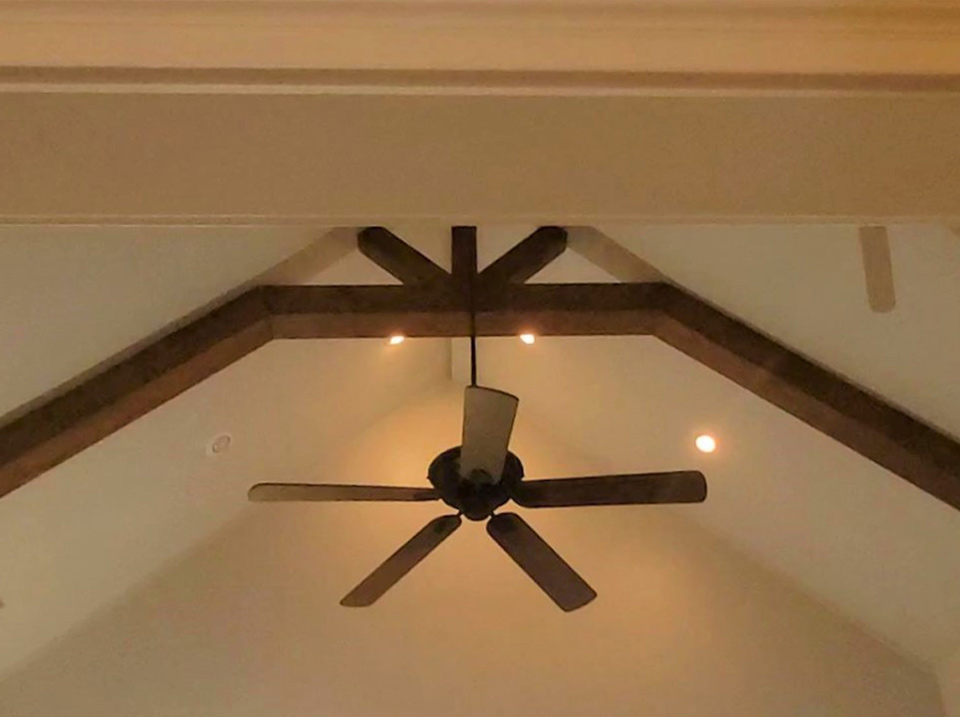
1. This gorgeous home with cathedral ceilings had one problem...Mold on the ceiling.
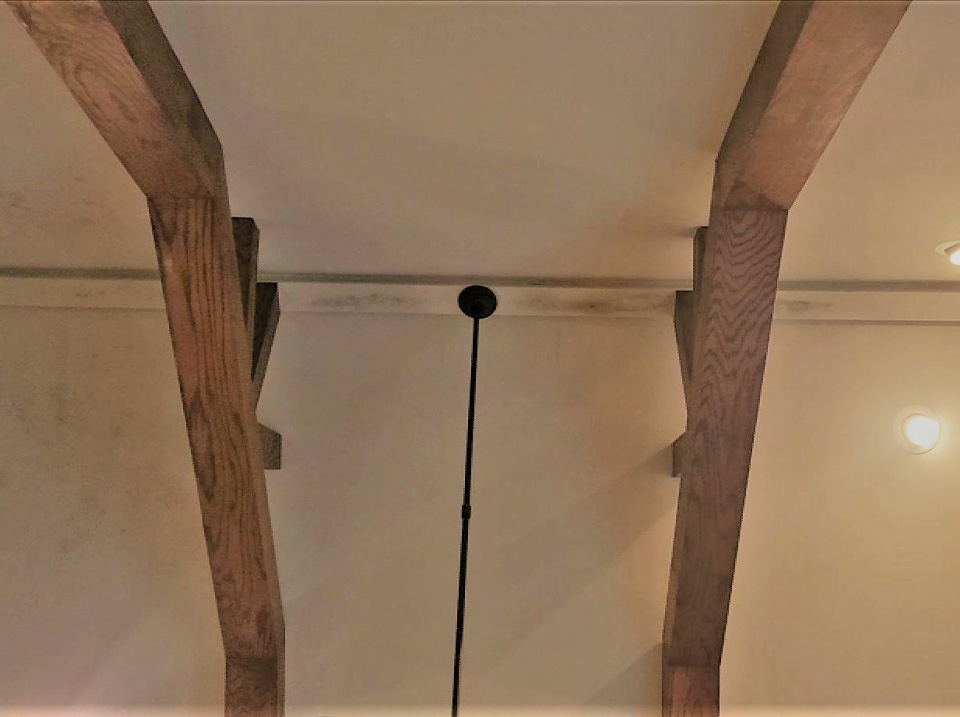
2. As you can see here, the mold has spread all over the drywall and ridge beam that sits 16 feet up in the air. How could this happen?
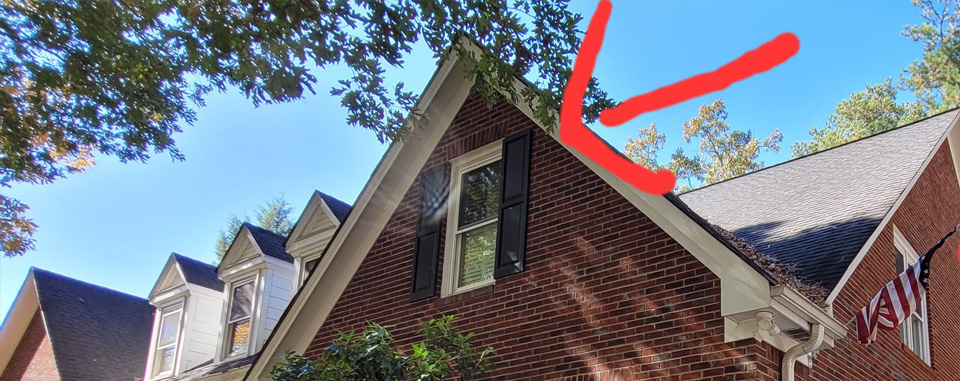
3. Mold is a result of moisture, so our team began our inspection around the perimeter of the house, and started to notice something odd.
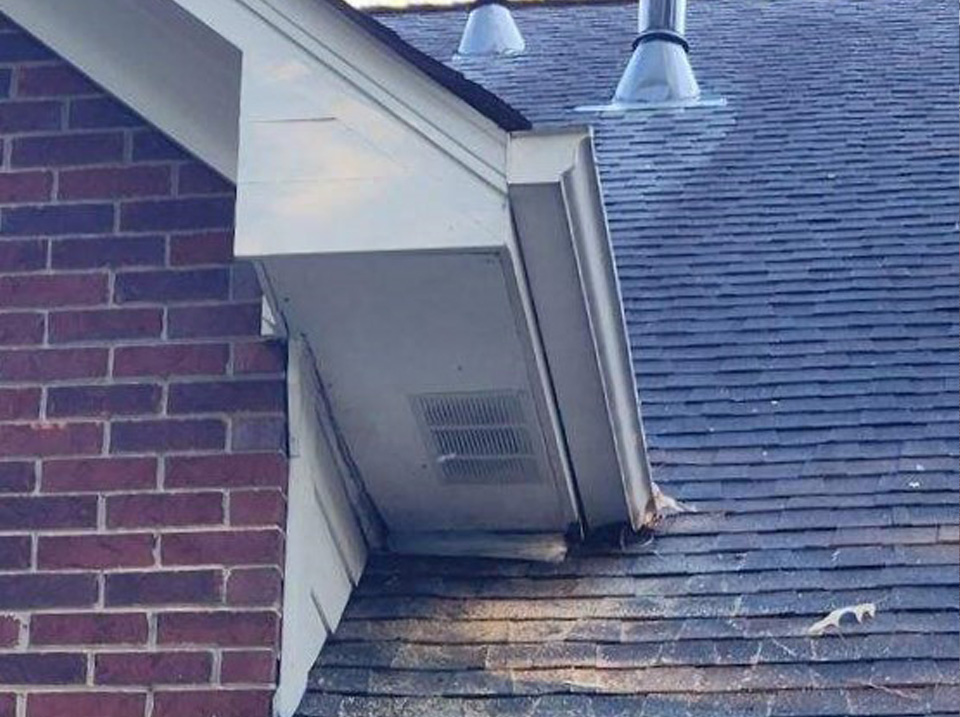
4. The soffit vents that let air in the attic were undersized and there were not enough installed for a home this size.
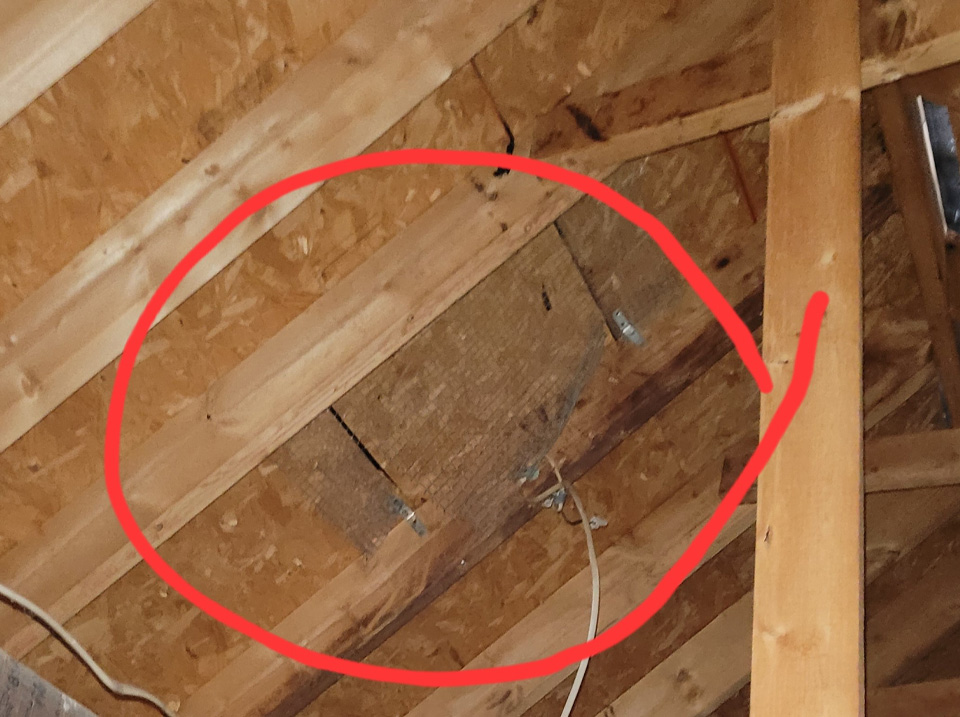
5. Upon further inspection in the attic, we noticed there were no attic fans. It appeared there once was one, but it had been taken out and covered when the home was re-roofed.
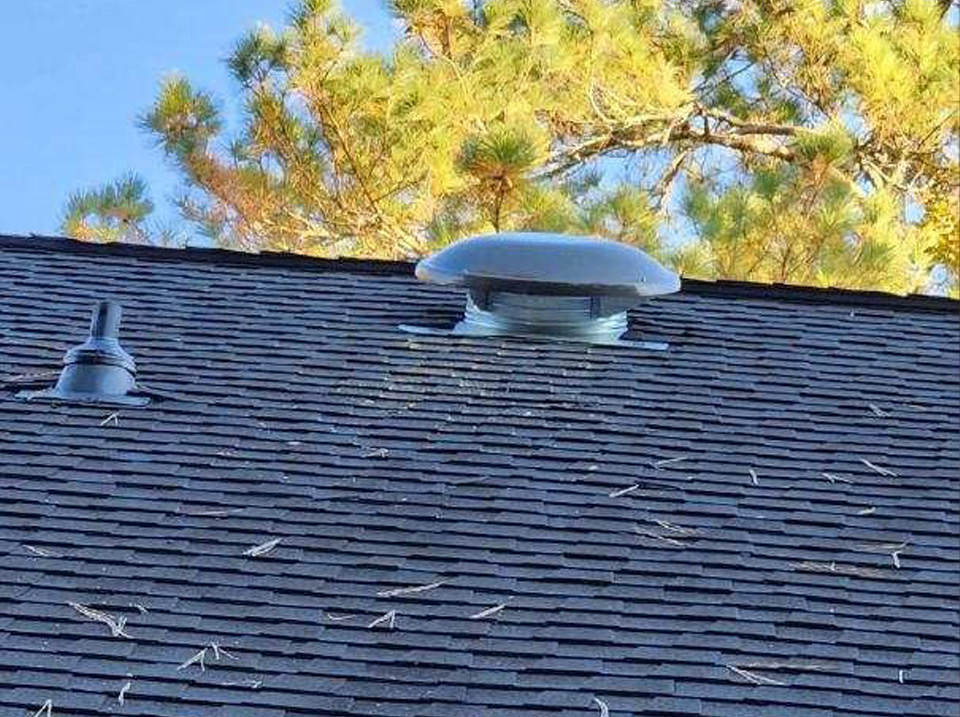
6. Our team installed 2 powerful roof mount attic fans and properly sized soffit vents, to ensure proper air flow through the attic.
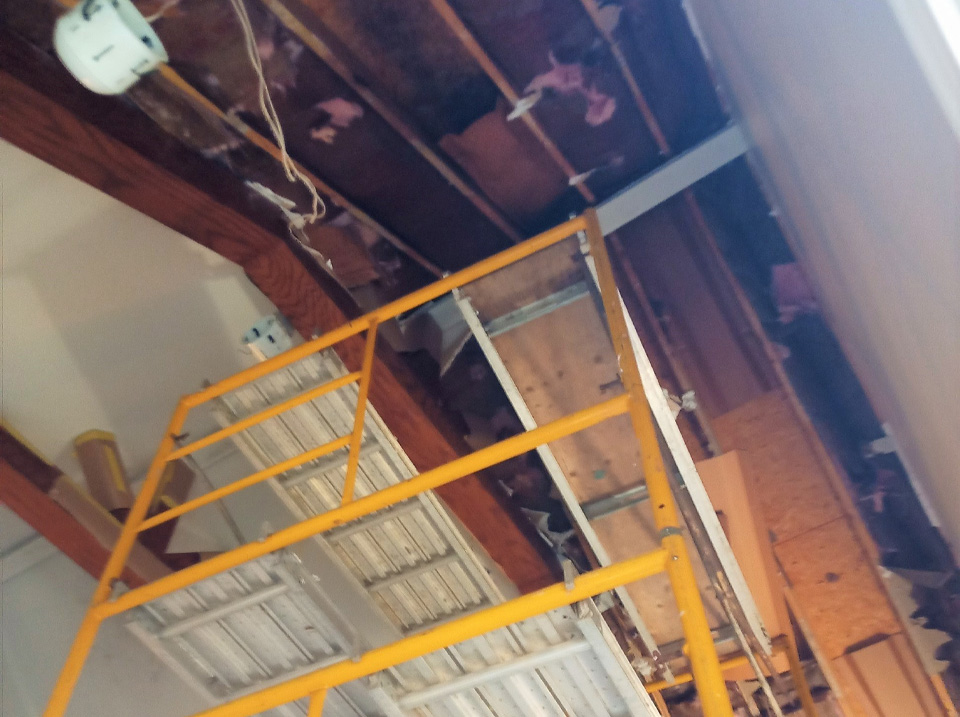
7. The team set up scaffolding and began the demo process.
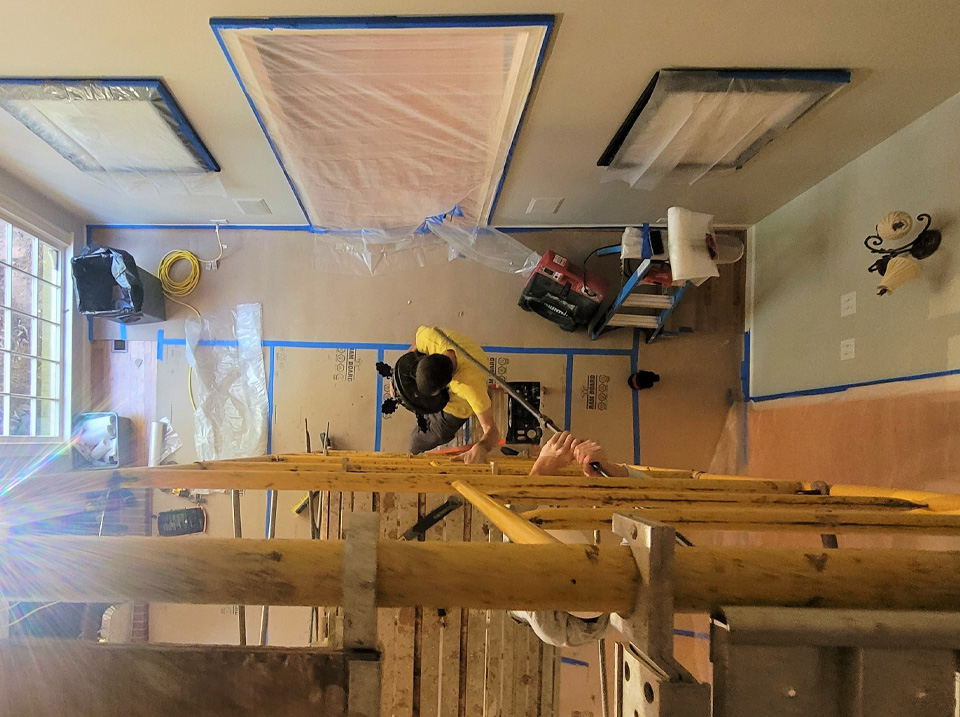
8. We always install floor protection, and plastic containment barriers on doorways and HVAC vents before performing mold remediation.
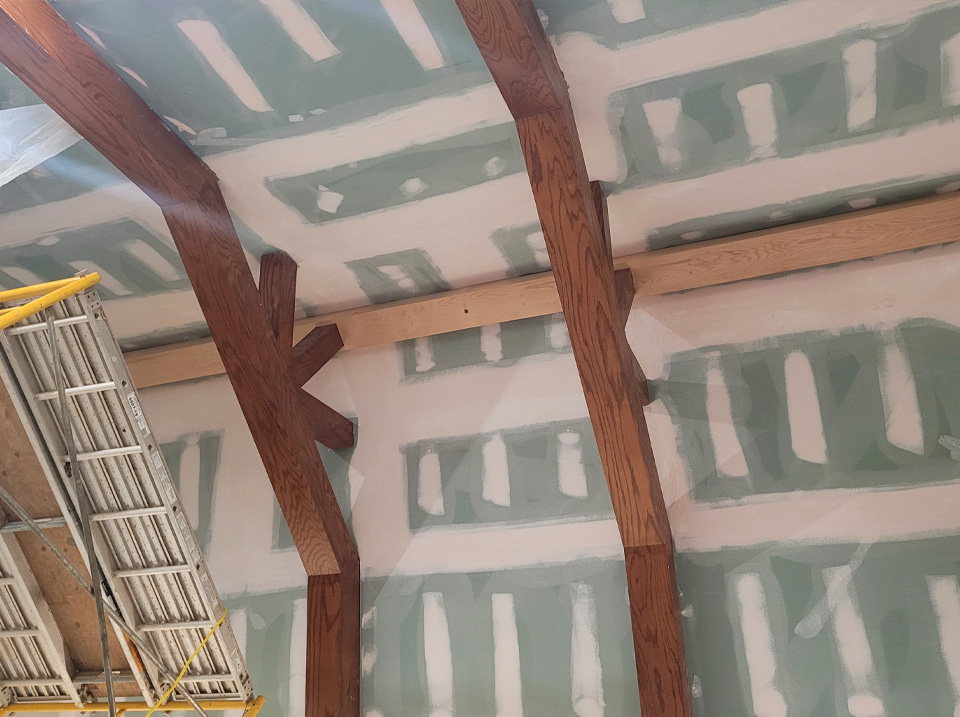
9. With the demo done, and mold remediation complete, our team installed mold resistant drywall to the ceiling, and the homeowner asked if we could install an oak beam along the ridge to match the others.
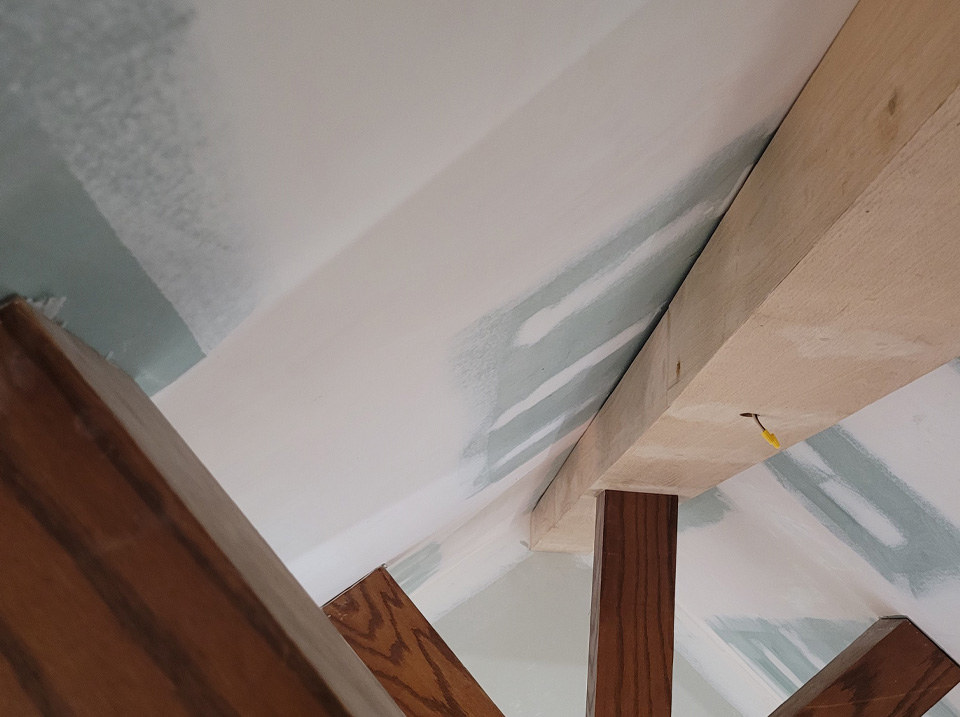
10. Installing a red oak beam along the ridge.
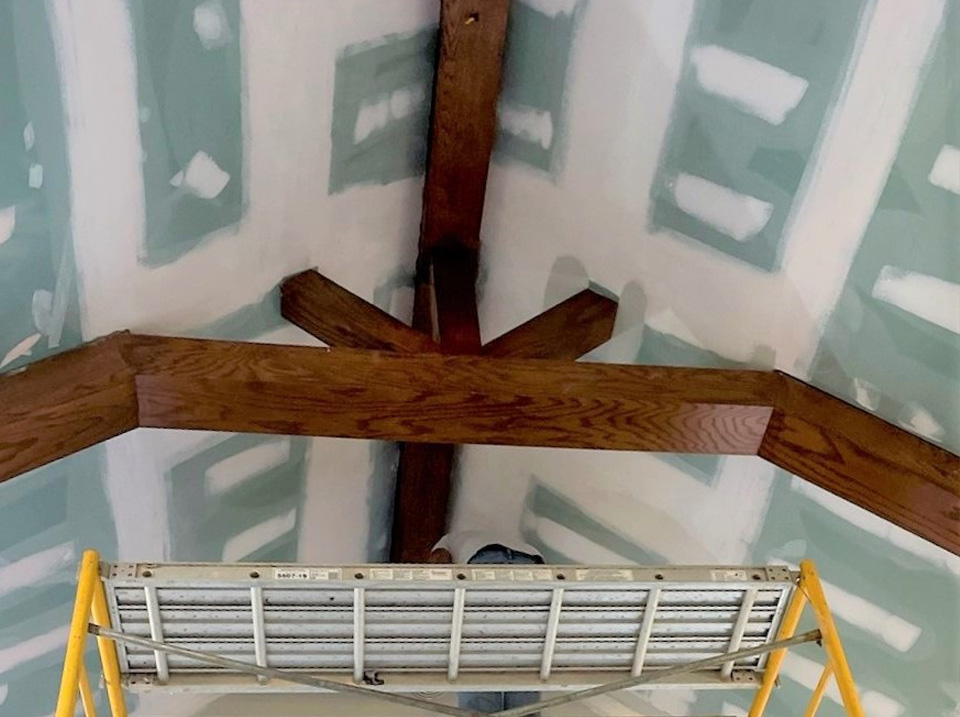
11. First layer of stain applied.
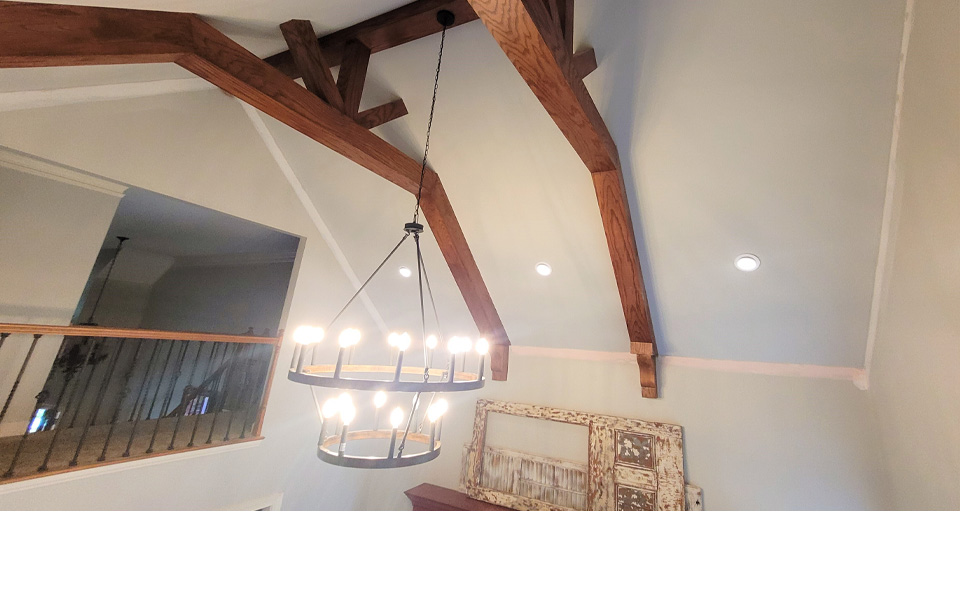
12. Oak beam finished and new chandelier installed.

- IS MOLD BAD FOR MY HEALTH?
- DOES BLEACH KILL MOLD?
- CAN I PAINT OVER MOLD?
- WHAT TO DO IF I SEE MOLD IN MY HOME
- HOW TO GET RID OF MOLD IN MY HOME
- WHO DO I CALL TO REMOVE MOLD FROM MY HOUSE?

Is mold bad for my health?
Does bleach kill mold?
Can I paint over mold?
What to do if I see mold in my home
How to get rid of mold in my home
Who do I call to remove mold from my house?
Proudly serving North Atlanta and surrounding areas!
True Resolve Collaborates With All Insurance Providers
We understand the stress of dealing with insurance providers. Rest assured, we collaborate with all insurance companies,
including these distinguished firms, to ensure a smoother, hassle-free process.
